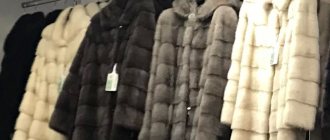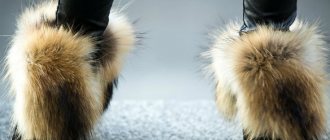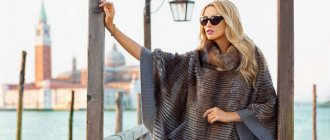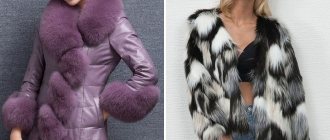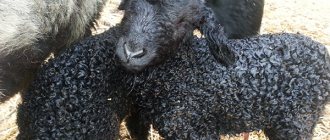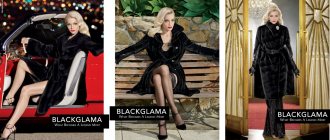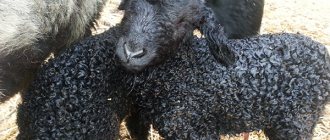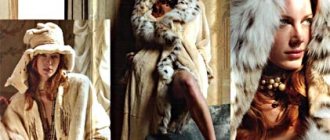Home / Wool fabrics
Back
Published: 11/06/2020
Reading time: 2 min
1
247
The popularity of natural furs and fabrics has been high at all times. The leading position among them is rightfully occupied by the beaver. This is a material that is used for sewing fur coats and coats, not inferior in quality to even more expensive alternatives.
- 1 Cardinal difference between materials of the same name
- 2 Description and appearance of coat fabric
- 3 Raw materials and production technology
- 4 Advantages and disadvantages
- 5 Purpose
- 6 Care and storage
- 7 Conclusion
Description and appearance of coat fabric
Despite the wide choice of woolen cloth materials, beaver fabric is the best suited for sewing coats. It is distinguished by density and rigidity, achieved due to the presence of standing short combed pile on the front side. On the reverse side, beaver fabric has a smooth surface. Its main advantages are its high strength and ability to warm, which allows it to be used for sewing warm outerwear.
Fact. Mechanical stress and moisture are not a problem for beaver coat fabric - creases instantly disappear, the surface is immediately smoothed out without additional effort, and when wet, it dries quickly and does not lose its attractiveness.
You can see the beaver fabric in the photo below:
Raw materials and production technology
The fur of Rex rabbits, in contrast to the wool of ordinary breeds, is characterized by greater density and, at the same time, shorter length of the pile. This skin lasts longer, is more resistant to external influences, and is also much thicker and, accordingly, warmer. However, such a thickness of raw materials adds trouble to fur coat manufacturers, since before sewing products they have to perform a number of procedures:
- soaking the skin in a special solution;
- thorough drying;
- stretching
Thanks to these manipulations, the raw material becomes an order of magnitude thinner, which facilitates the sewing process and also allows you to create more aesthetically pleasing, comfortable-to-use products.
The final stages of preparing material for sewing a beaver fur coat can be cutting the fur and dyeing it.
As for the production of beaver coat fabric, this process includes the following steps:
- washing the fabric, repeatedly combing it gradually while wet;
- smoothing;
- counter pile, in which the pile is laid in one direction or the other;
- dyeing;
- breaking of wet material manually with sticks or on special machines with rubber cords, as a result of which the pile takes a vertical position;
- fixing the pile by drying.
Homemade "toy"
Rex
They are bred not only to obtain beautiful skins, but also as “couch” pets. They are friendly, easy-going and get along well with people and other animals. There are special decorative dwarf species that are easy to accustom to the litter box and other objects of “cat” civilization. You just need to take into account that cozy soft “toys” make good jumpers (up to a meter high) and rodents that, in addition to carrots, are not averse to testing electrical wires and cables.
Rex
They feel good in our harsh climate; they can be housed in cages right on the street, under a canopy. In summer, it protects fur animals from overheating (air temperatures above 25 degrees are poorly tolerated by them). Only newborn rabbits (which look very similar to squirrels) require more thorough, warm rooms. Rexes, unfortunately, do not produce large offspring (usually no more than 7), but they are valued quite highly on the market. Babies are put up for sale and purchased when they are 1 month old, and it is important that the animals do not have drooping ears or matted fur - signs of a defect in the breed.
The cage is made of durable material that cannot be chewed, the bottom is mesh with bedding on top. They carefully monitor cleanliness to prevent the spread of infections and parasites. Animals should always have clean water in their drinking bowls (heated in cold weather), and hay should not fall out of the feeder (royal rabbits do not eat from the floor).
Rabbits of this breed eat in small portions, but often: it is better to distribute food at strictly defined hours (for adults - 3 times, for babies and mother rabbits - 4 times a day), so that gastric juice is actively produced and the food is well absorbed. For healthy digestion, approximately 2/3 of the diet should consist of foods containing fiber - hay and green succulent food.
It is important to provide a varied diet. The menu is based on grain concentrates, especially from oats and corn with the addition of cake and bran. Oats can be given dry, and corn grain can be crushed and slightly soaked in water until soft. The female rabbit and her offspring must cook barley, oats and legumes after grinding; goat’s milk is also beneficial for the family.
Concentrates can replace special feed for rabbits; sometimes, in force majeure circumstances, an option intended for pigs or calves is allowed, but not for birds (due to the presence of shells and small stones in it).
A significant part of the “velvet hares” diet is given to green food (from spring to autumn), which can be prepared in the garden, as well as in the forest, field, and meadow. They will go into action:
- fodder cabbage, tops of fodder beet, turnip, rutabaga, Jerusalem artichoke, sugar beet and rhubarb;
- herbs clover, alfalfa, nettle, burdock and dandelion.
In winter, when there is no greenfinch, vegetables and root vegetables are actively fed: carrots, potatoes, beets, zucchini, pumpkin (good boiled), turnips, and apples. Rabbits also need hay, branches, and sometimes straw. Vitamin-rich twigs of juniper, spruce, pine, rowan, linden, birch and apple trees are prepared for future use.
Keep in mind that edible plant foods may accidentally contain harmful ingredients: tops of tomatoes and potatoes, branches of cherries, cherries, plums (contain hydrocyanic acid), poisonous branches of wild rosemary, buckthorn, apricot, elderberry and bird cherry. The prohibited list also includes henbane, buttercup, lily of the valley, spurge, night blindness, fern, and datura.
It can be difficult to balance such a variety of feeds on your own; pets may experience a lack of certain vitamins and microelements. Often rabbits begin to go bald and pluck each other's fur. To ensure that animals are provided with the full range of necessary nutrients, use a specially created premix -
"Health for rabbits." It contains a complex of vitamins - A, B1, B2, B3, B4, B5, B12, C, D3, E, biotin; list of important macro- and microelements. With the supplement, animals' appetite and vitality improve, and the incidence of illness decreases. The weight increases, the coat becomes dense, dense and durable.
Advantages and disadvantages
Fur or beaver coat fabric are worthy contenders for settling into the wardrobe of a person who cares about his comfort and appearance. However, when purchasing something made from this material, it is important to understand all its strengths and weaknesses.
| Advantages | Flaws |
| Beautiful shine that gives things an expensive look | Not suitable for extremely low temperatures (below -25°C) |
| High pile density | The tendency of light-colored products to develop yellowness due to errors in care |
| Long service life, overall (average about 7 years) | Durability of wear compared to other fur coats (for example, beaver or otter fur) |
| Affordable price | Higher likelihood of tears in the fabric due to the small size of the skins and, accordingly, a large number of seams |
| Pleasant to the touch | — |
| Good resistance to strong winds and rain | — |
How much does a sheared beaver fur coat cost: the price of quality products
When choosing, you should pay attention to the cost of finished products. If a sheared beaver fur coat is offered, the price of which is too low, then you need to be wary. There is a possibility that a low-quality product is being sold. Initially, it cannot be too cheap.
The final cost is influenced not only by the quality of the fur, but also by other parameters (length, tailoring, reputation of the manufacturer, and so on). Most often, the price ranges from 30-40 thousand rubles.
The most popular brands are presented in the table.
| Manufacturer | Country or region |
| NAFA | Canada |
| SAGA | Scandinavia |
| KOPENGAGEN FUR | Denmark |
| MARINA FURS | Russia |
Purpose
Most often, beaver is used for sewing outerwear - fur coats and fur coats. Modern manufacturers offer a huge range of styles. Among them you can find fitted, straight, flared options, products with buttons or zippers, short/long models, and this is far from the limit! The color of beaver outerwear can also suit every taste - these can be more universal products, close in color to natural rabbit color, while for those who like to stand out, models made of brightly colored fur or coat fabric are suitable.
An excellent addition to a fur coat or coat can be a hood or collar made of more expensive fur, for example, mink - thanks to this element, the product will take on a more elegant, presentable look.
By the way, fur coats and beaver coats are no less popular among the stronger sex.
Author:
Zakharova Nina Afanasyevna
I hope you like my article! If you find any shortcomings, just write to me about it! I am always ready for a conversation and will answer any questions you have, ask them!
